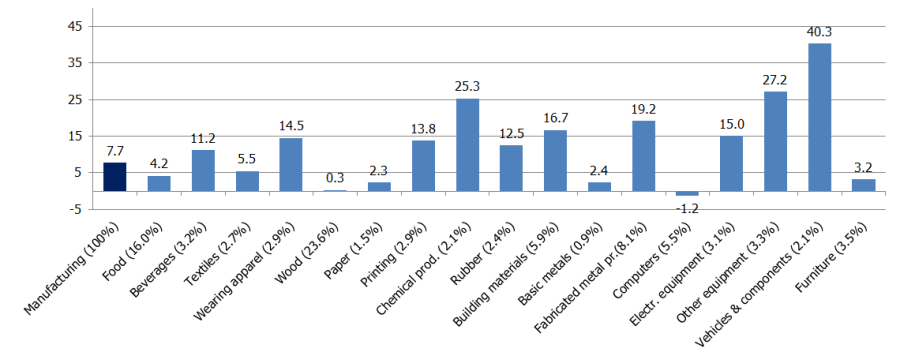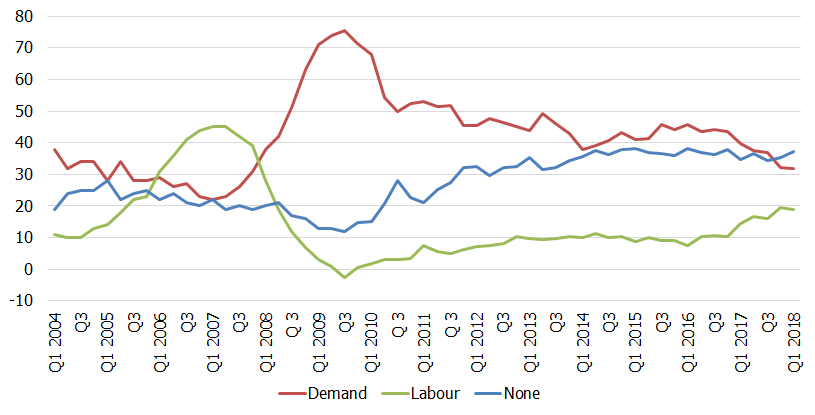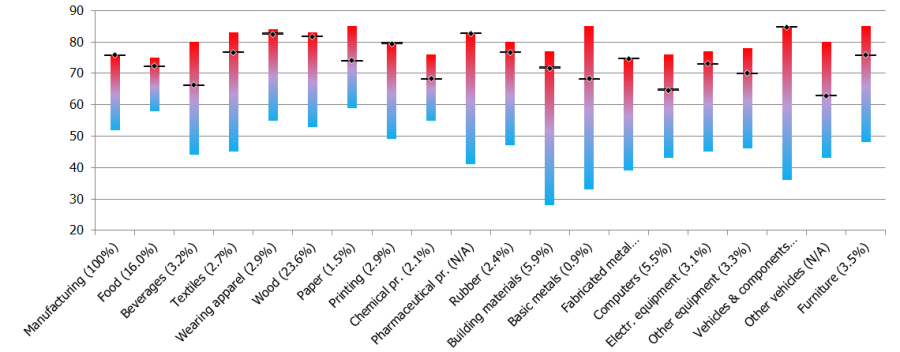Manufacturing growth remains solid

High growth rates were retained also at the end of the year. Manufacturers have become increasingly optimistic about both the rising demand as well as new orders. At the same time, however, the problems associated with the shortage of labour are also growing and capacity utilisation has reached a record high and is still climbing, thus signalling also the need for boosting investment.
Several sub-sectors report high growth already since the end of 2016; therefore, a decrease in their contributions could be expected. Nevertheless, regardless of the already high base achieved, manufacturing output continued to grow steadily in the fourth quarter of 2017: 7.7% year-on-year and 2.1% quarter-on-quarter. Impressive growth was reported again for some of the sub-sectors (for example, manufacture of beverages, non-metallic mineral products, electrical equipment, motor vehicles and their components) in the fourth quarter of 2017. Output increased considerably also in manufacture of wearing apparel and chemical products as well as in sectors producing inputs for the construction sector (a significant contribution coming from manufacture of building materials and fabricated metal products).
Almost all sub-sectors reported high or moderate output growth in the fourth quarter. This suggests that successful exports as well as domestic activities remain the drivers of development in manufacturing. The rapidly growing construction sector also benefited from the relatively mild weather conditions at the end of the year.
Business surveys show that industrial confidence has reached the highest level since 2007 in the most recent months, i.e. in December 2017 and January 2018. Both the overall assessment as well as that of the export orders have improved. The industry is optimistic about production expectations as well as the selling prices and most respondents currently see no obstacles to their business. Therefore, manufacturing can be expected to continue in the same vein.
At the same time, it will be difficult to sustain the overall high rate achieved in 2017 and it will gradually decelerate. Problems associated with labour shortage will also have a negative effect on growth. Moreover, capacity utilisation has reached a new historic high in the first quarter of 2018 and this can already be observed in many sub-sectors: manufacture of wearing apparel, wood, printing, pharmaceutical preparations, fabricated metal products, motor vehicles and their components. The high capacity utilisation rates signal that new investment is required for further growth, and this, to a large extent, is exactly what will determine the future development potential.
Volume indices of manufacturing sub-sectors in Q4 2017 (%; year-on-year; calendar-adjusted data; output weights in %)

Factors limiting production (%)

Capacity utilisation in manufacturing sub-sectors in Q1 of 2018 and variations since 2014 (%; output weights in %)

Textual error
«… …»


